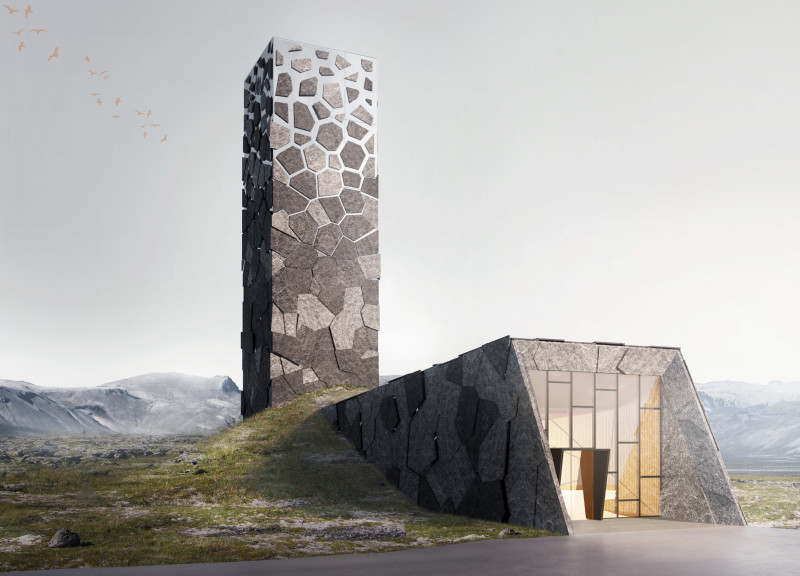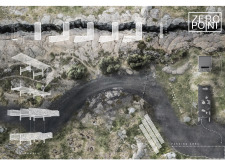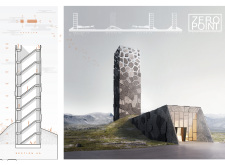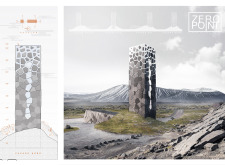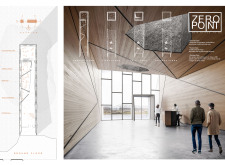5 key facts about this project
The architectural design encompasses a central tower flanked by multi-functional spaces, characterized by an open layout that promotes visibility and engagement. The project aims to create a cohesive experience, where users can navigate between different areas seamlessly. The design emphasizes transparency and connectivity, utilizing large glass elements to invite natural light and provide visual access to the surrounding scenery.
Architectural Design Elements
One of the distinctive aspects of this project is its emphasis on verticality through the central tower, which acts not only as a focal point but also enhances the site's visibility. The choice of local stone for the tower's façade is significant, grounding the structure in its environment and reinforcing the connection to the landscape. This material choice supports the architectural narrative of permanence while providing thermal mass, which aids in energy efficiency.
The integration of wood elements in the interior spaces creates warmth and comfort, complementing the stone's robustness. This combination not only serves aesthetic purposes but also contributes to acoustic performance, a critical factor in communal settings. The careful selection of materials reflects an intention to harmonize with the natural surroundings while ensuring durability and sustainability.
Spatial Organization and Community Engagement
The spatial arrangement within the Zero Point project is designed to foster community involvement. The ground floor features a multi-functional space adaptable for various events, meetings, or communal gatherings. This flexible design allows for effective use of space, encouraging social interaction.
Architectural walkways lead to observation decks, inviting occupants to explore the surroundings while emphasizing the landscape's importance. The inclusion of greenery and planting areas enhances the ecological aspect of the project, encouraging a direct relationship between nature and the built environment.
This design strategy is underscored by the incorporation of sustainable elements such as solar panels, which align with the project’s commitment to environmentally friendly practices. The overall approach reflects an understanding of contemporary architectural principles that prioritize sustainability and user engagement.
The Zero Point architectural project stands out due to its thoughtful integration of community-focused spaces, sustainable design practices, and a clear contextual connection with the landscape. It serves as a relevant case study for those interested in architecture that balances aesthetics with practical and ecological considerations.
To gain deeper insights into the project's architectural plans and sections, explore the detailed representation of this unique design. The architectural designs and ideas presented provide further context on how this project distinguishes itself in the landscape of modern architecture.


